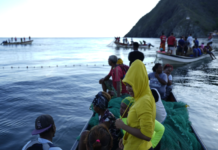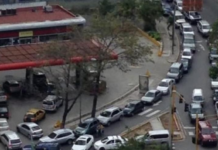[ad_1]
During the almost five decades that Fidel Castro ruled Cuba, he steadily boasted of his revolution’s achievements in health, education and welfare.
Yet Castro’s critics insist that the pillars of those achievements were hollow from the start, and crumbling by the time he retired in 2008.
Whatever the truth about the achievements, they did not stop hundreds of thousands of Cubans from leaving the island in search of better opportunities. While Cuba produced a number of world-class writers, ballet dancers, musicians and athletes, many of them wound up defecting abroad.
The 2014 U.N. Human Development Report — which ranks countries according to health, education and economic achievement — lists Cuba in 44th place among 187 nations. Norway ranked first, while the United States is in 12th place. But other Latin American countries also ranked high — without a Castro-styled revolution that also choked human rights. Argentina ranked 49th, Uruguay 50th, Costa Rica 68th and Mexico 71st.
Critics also say his revolution’s boasts are misleading because pre-Castro Cuba already ranked high in some indicators. Before 1959, Cuba had Latin America’s lowest infant mortality rate and the third-highest per capita gross domestic product, said Carmelo Mesa-Lago, an emeritus economics professor at the University of Pittsburgh.
Some experts also argue that Cuba had help notching those achievements — as much as $6 billion in annual Soviet subsidies it received from the 1960s to the early 1990s. Cuba’s place in the U.N. Index plummeted from 61st out of 160 countries in 1992 to 89th out of 173 in 1994, three years after the subsidies ended. It was only after 2000 that Cuba began to recover.
Health numbers
Cuba’s health indicators clearly rank among the best in the region.
Life expectancy at birth in 2014 stood at 78.2 years — up there with the United States at 79.5. And the island today has many times more doctors, about 76,000, than before the Castro revolution, which numbered about 6,400. At the start of the revolution, there was just one doctor per 1,058 people. Decades later, the country had one per 155 inhabitants.
“The Cuban health and education systems unquestionably were major accomplishments of the revolution,” said Max Lesnik, an exile broadcaster in Miami who is sympathetic to the revolution.
Yet some of the “advances” require some context. For example, Havana rightfully boasted that its infant mortality rate for 2007 of 5.3 per 1,000 births was one of the world’s lowest. But figures from the U.S. Centers for Disease Control and Prevention show Cuba ranked 23rd in the world in 1960, and 27th in 2004. The CIA World Fact Book placed Cuba in 72nd place for 2013.
And the best medical care is available only to senior officials and dollar-paying foreigners, not ordinary Cubans, said Dr. Julio Cesar Alfonso, who practiced in Cuba from 1992 to ’99 and now lives in Miami. He cited the contrast between two hospitals where he worked, CIMEQ in Havana and a provincial hospital in the north-central city of Cárdenas.
CIMEQ, which treats many top Cuban officials and foreigners, has air conditioning and private suites, Alfonso said. Patients in Cárdenas, meanwhile, must bring their own bed sheets, and cots are lined one next to the other.
Alfonso also described chronic shortages of medical supplies in virtually all places that treat ordinary Cubans — again, not foreigners or senior officials. “Shortages go from simple aspirin to a wide range of antibiotics to medicines to deal with chronic illness.”
A 2007 report by Katherine Hirschfeld, a professor at the University of Oklahoma who spent several years in Cuba, said islanders have a dim view of their healthcare system, even though it’s free.
“After just a few months of research,” Hirschfeld wrote, “it became increasingly obvious that many Cubans did not appear to have a very positive view of the healthcare system. … A number of people complained to me informally that their doctors were unhelpful, that the best clinics and hospitals only served political elites and that scarce medical supplies were often stolen from hospitals and sold on the black market.”
Edward Gonzalez, a long-time Cuba watcher with the Rand Corp. in California, said there’s also evidence of government manipulation of some of its health statistics. Cuban medical authorities regularly encourage abortions of unhealthy fetuses, he said, and hospitals do not report births until the second day, thereby excluding first-day deaths from infant mortality statistics.
In 2007, the year for which the most recent figure was available, Cuba had 248 hospitals, all public, according to the Medical Education Cooperation with Cuba website. In 1958 the country had about 320 private and public hospitals, according to a study published by the University of Miami’s Institute for Cuban and Cuban-American Studies.
And almost half of the 74,000 doctors Cuba has produced today are estimated to be serving abroad, many in Venezuela or Bolivia, creating shortages at home. In 2014, Cuba deployed 256 medical professionals to West Africa to help combat a major ebola outbreak.
An April 2008 article in the Cuban magazine Bohemia reported shortages of doctors and medical supplies, and a lack of proper hygiene in some clinics. A 2007 survey by the Juventud Rebelde newspaper of 22 dental clinics revealed inadequate treatment of patients and shortages of supplies.
“It is routine for patients to offer a regalito, a little present such as cash or a scarce product”’ to dentists, according to a The Guardian newspaper report in 2007. “The better the regalito, the better the service.”
Education figures
In the field of education, Cuba today has one of Latin America’s highest literacy rates — 99.8 percent — and its students regularly score high on regional and worldwide math and science comparisons. All schools are free and attendance is mandatory until the 9th grade. In 1950-51, there were 7,614 schools in Cuba, but by 2000-01, there were 12,207, according to the World Bank. The agency also said that only half of the country’s school-aged kids went to school in 1950, while 40 years later, all did. By 2000, there were 80,000 primary school teachers, compared to 17,355 in 1958-59, the World Bank said.
Yet literacy before Castro already stood at 76 percent, the second highest in Latin America after Argentina. Under the Castro government, many books are banned, history textbooks carry only the government’s version and many recent university graduates say they see no future at home.
Many young architects, doctors, engineers, nurses and teachers who arrived in South Florida since 2000 said they earned more in tips as waiters and bartenders than in their professions.
Among problems cited in a Juventúd Rebelde report in 2008 was an “exodus”’ of teachers away from the profession. The shortage at one point forced authorities to use as teachers youths still studying to be teachers themselves, some as young as 17. A report submitted to the National Assembly in July 2008 said more than half of all high school teachers were still in training. Multiple websites that report on Cuba reported in 2014 that the teacher shortage continues and that the island has enough educators to staff only about 93 percent of schools.
Welfare
As for general welfare, the picture is not much better.
The average retirement pension is about half of a monthly salary — which averages $17 in a country where a pair of shoes can cost about $30 About 2 million of Cuba’s 11 million people currently receive pensions, according to official figures. In 2009, the Cuban government raised the retirement age by five years to cope with rising pension costs.
A ration card provides a basic monthly basket of food and other goods at highly subsidized prices. But most Cubans say the food rations only last seven to 10 days — and that they have to pay much higher prices for the rest of the month. In 2010, Raúl Castro, who replaced his brother Fidel as Cuban leader, called for an orderly end to the ration system.
As of 2009, about 1.2 million Cubans had a fixed telephone line, and about 1 million cell phones were in use as of 2010. Nevertheless, telephone communications in Cuba, once dismal, have improved vastly over the years. About 2.8 million Cubans have access to the Internet, which is heavily controlled by the government.
Meanwhile, Cubans continue to flee the island. Almost 2 million island-born Cubans now live in the United States, according to 2010 U.S. Census figures.
More than 100,000 Cubans left the island for the United States between 2005 and 2014, and after President Barack Obama ordered the normalization of diplomatic relations with Havana on Dec. 17, 2014, arrivals of Cubans in the United States appeared to accelerate.
Most of the new arrivals said they left Cuba because they feared that normalization would bring about the demise of the Cuban Adjustment Act, the 1966 law that enables Cubans to get permanent residency after a year and a day in the United States.
“Castro’s legacy is going to be very negative for Cuban society,” said Gonzalez, the Rand Corp. Cuba watcher. “He will leave a dysfunctional legacy.”
[ad_2]
fuente








